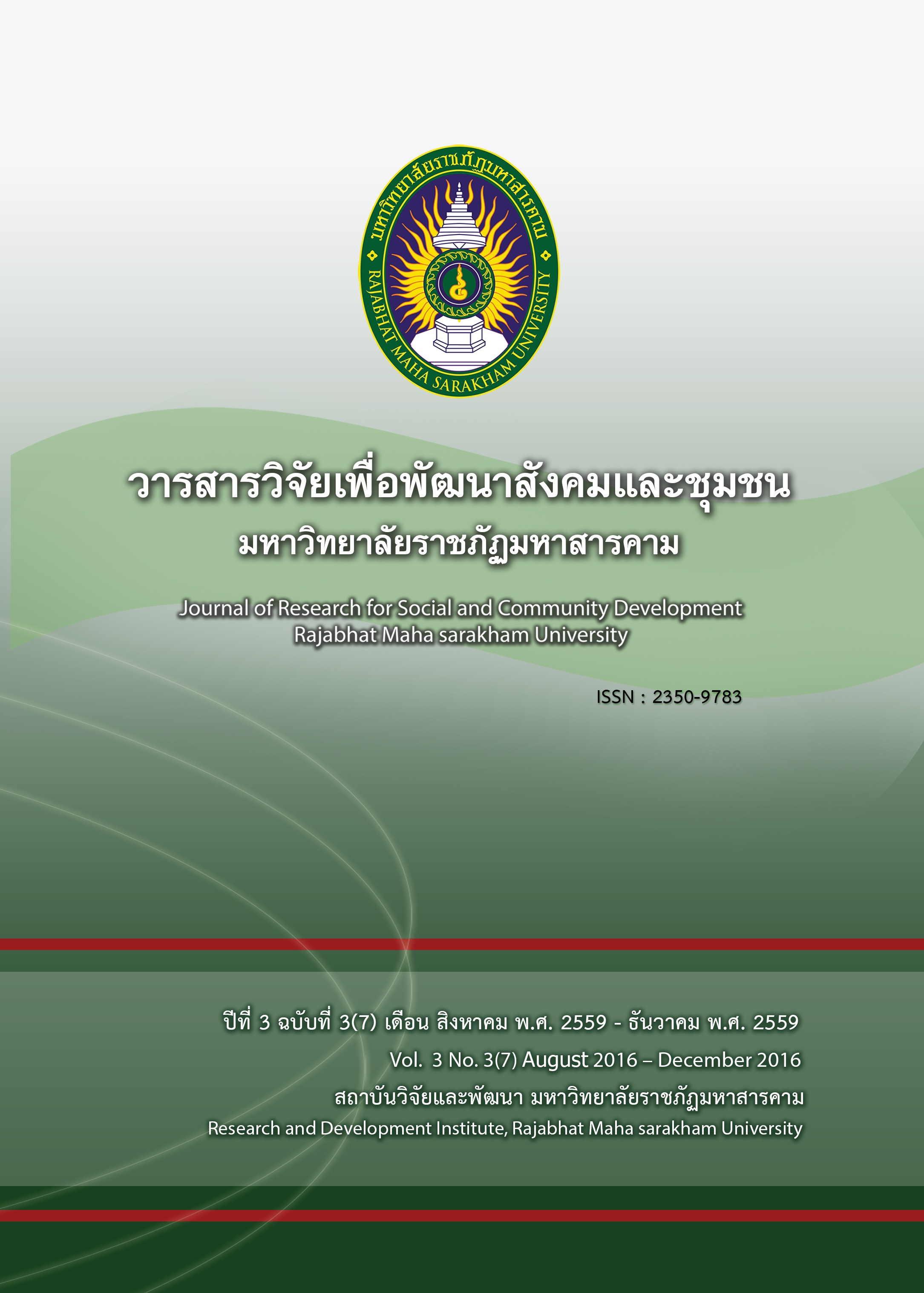Process of Communication Based on Buddhism for Developing of Public Relation at Rajabhat Maha Sarakham University
Keywords:
Buddhism-based Communication, Public Relations, Right SpeechAbstract
This research aimed to (2) study a theoretical concept of the public relations, (3) a process of the public relations based on Buddhism at the Rajabhatmahasarakham University, and (4) to get Buddhist information applied to the public relations of the Rajabhatmahasarakham University. In this research, there was the analysis of the Buddhist data through a theory of the Public relations in the West and Thailand. A research used questionnaire and interviewed the target groups, i.e. personnel of the Rajabhatmahasarakham University: administrators, lecturers, officers and students. The data analysis was done in the computer's program. The result of this research was found that; Model and a process of the Buddhistbased communication were right and proper to develop the public relations at Rajabhatmahasarakham University. Generally, the public relations at this university requited many types of a modern communication tool such as radio, television, cable TV, internet, and magazine. A personal media in the communication system was the achievement media. It was most important because it covered representation of feelings, thoughts, and speech through the communication tools for more understanding among people. In this person media, the use of speech in the communication system at the university was still problematic. However, if Sammavaca in Buddhism was applied to the public relations, it caused harmony among people, effective public relations and good image. Generally, Sammavaca (Right Speech) consisted of 5 components: (1) true speech, (2) polite speech, (3) useful speech, (4) kind speech and (5) speech in a proper time. All of these components could make more achievement of the communication management. Moreover, a researcher found that the components of communication: a sender, a receiver, a channel of receiving a message and a message through theories in the West would be complete if there was the applied Buddhist principles to the public relations. It will be operating of institute as with smooth made for the ideal of the university as a community where everyone proud.
References
บุญชม ศรีสะอาด. (2545). การวิจัยเบื้องต้น. พิมพ์ครั้งที่ 7. กรุงเทพฯ : สุวีริยาสาสน์
ฝ่ายประชาสัมพันธ์ มหาวิทยาลยัราชภัฏมหาสารคาม. (2559). คู่มือรายงานผลกลมุ่งานประชาสัมพันธ์ มหาวิทยาลยัราชภฏัมหาสารคาม. มหาสารคาม : ฝ่ายประชาสัมพันธ์ มหาวิทยาลัยราชภัฏ มหาสารคาม.
พรพิมล ก่อวงษ์. (2546). หลักการประชาสัมพันธ์ตามแนวพุทธกับหลักการประชาสมัพันธ์สมยัใหม่. กรุงเทพมหานคร. วิทยานิพนธ์พุทธศาสตรมหาบณัฑติ (พระพุทธศาสนา) มหาวิทยาลัยมหาจุฬา ลงกรณราชวิทยาลัย
มหาจุฬาลงกรราชวิทยาลัย. (2539). พระไตรปิฎก (ภาษาไทย) (2539) ฉบับมหาจุฬาลงกรณราช วิทยาลัย. กรุงเทพมหานคร: มหาจุฬาลงกรราชวิทยาลัย.
พีระ จิระโสภณ. (2529). “ทฤษฎีการสื่อสารมวลชน” ใน หลักการและทฤษฎีการสื่อสาร หน่วยที่ 11. นนทบุรี : มหาวิทยาลยัสุโขทัยธรรมาธิราช. 2529
ลดาวลัย์ ยมจินดา. (2535). การใช้เครื่องมือสื่อสารเพื่อการประชาสัมพันธ์. กรุงเทพฯ : โรงพิมพ์. สัานัก พิมพ์มหาวิทยาลยั,
ศิวาพร ศรีศักดินันท์. (2553). รูปแบบการเสริมสร้างจริยธรรมการสอ่ืสารเชิงพุทธทางสื่อออนไลน์ของ สื่อมวลชนไทย. วิทยานิพนธ์นี้เป็นส่วนหนึ่งของการศึกษา ตามหลักสูตรปริญญาพุทธศาสตรดุษฎี บัณฑิต สาขาวิชารัฐประศาสนศาสตร์ บัณฑิตวิทยาลัย มหาวิทยาลยัมหาจุฬาลงกรณราช วิทยาลัย.
อัปษรศรี ปลอดเปลยี่ว. (2542). มนุษยสัมพันธ์ในการบริหารการศกึษา. กรุงเทพฯ : คณะศึกษาศาสตร์ มหาวิทยาลยัรามค าแหง.
Downloads
Published
How to Cite
Issue
Section
License
Articles that are published are copyrighted by the authors of the articles






